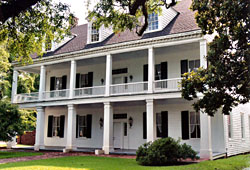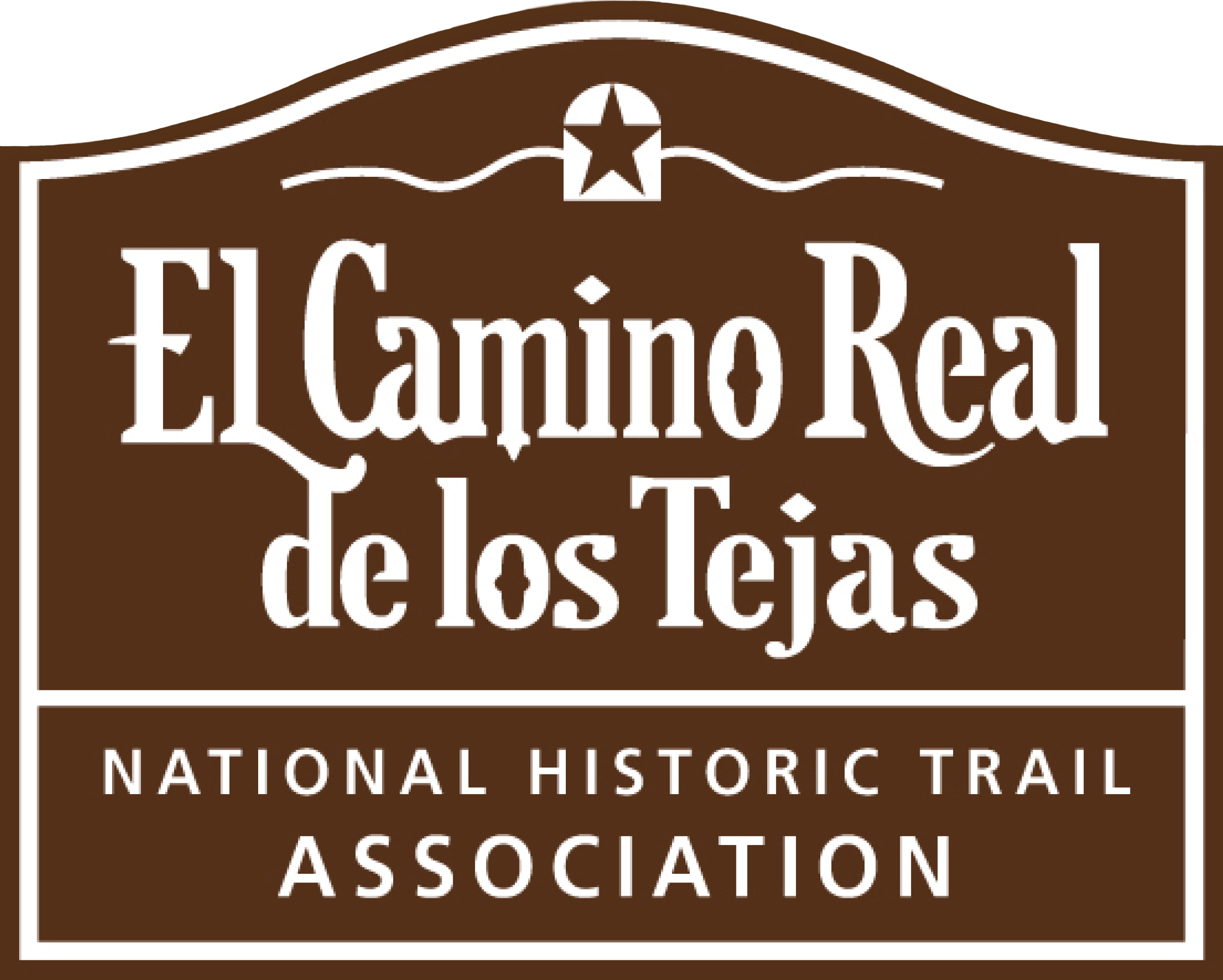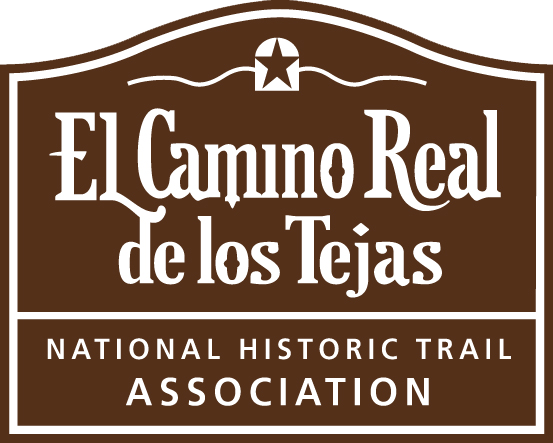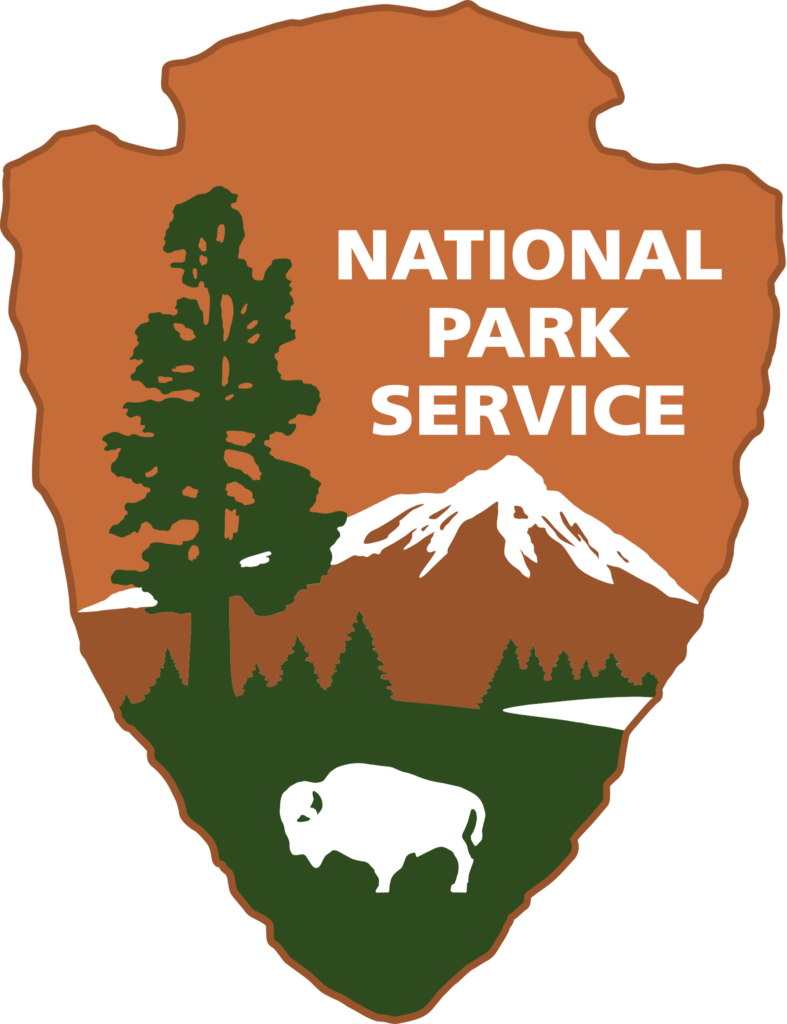Alto
Caddo Mounds State Historic Site
“More than 1,200 years ago, a group of Caddo Indians known as the Hasinai built a village 26 miles west of present-day Nacogdoches. The site was the southwestern-most ceremonial center for the great Mound Builder culture. Today, three earthen mounds still rise from the lush Pineywoods landscape, where visitors discover the everyday life and the history of this ancient civilization.”
Located: 1649 TX-21, Alto, TX 75925
Texas Historical Commission
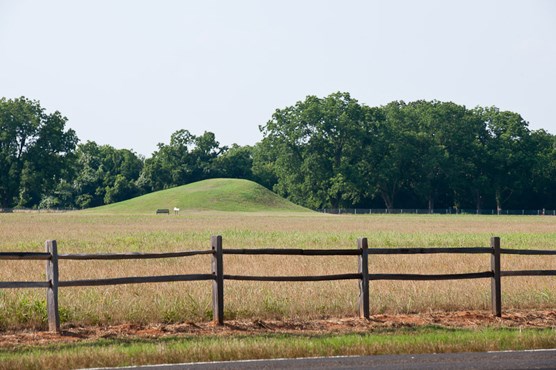
Grapeland
Mission Tejas State Park
The park was built in 1934 by the Civilian Conservation Corps as a commemorative representation of Mission San Francisco de los Tejas, the first Spanish mission in the province of Texas, which was established in 1690. Also in the park is the restored Rice Family Log Home, built in 1828 and restored in 1974. The home is one of the oldest structures in the area. The home served as a stopover for immigrants, adventurers and local residents traveling the Old San Antonio Road across pioneer Texas.” (Texas Parks and Wildlife)
Mission Tejas State Park
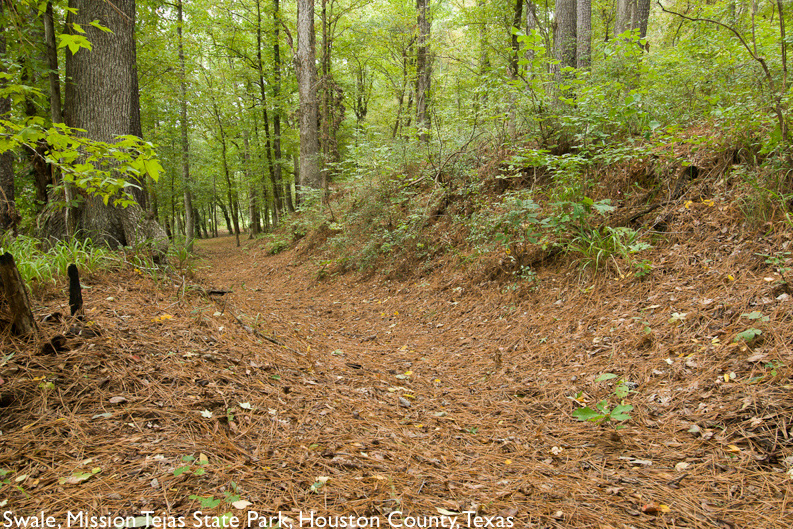
Hemphill
Gaines-Oliphant House
“Listed in the National Register of Historic Places, the Oliphant House was built in 1818 and is one of the earliest pre-Republic, Anglo structures in Texas. The log house is the only surviving structure of James Gaines’ large plantation and ferry/tavern enterprise on the Sabine River crossing of El Camino Real de los Tejas. Gaines built the house for his in-laws.”
Located: Ensign Dr, Hemphill, TX 75948
National Park Service
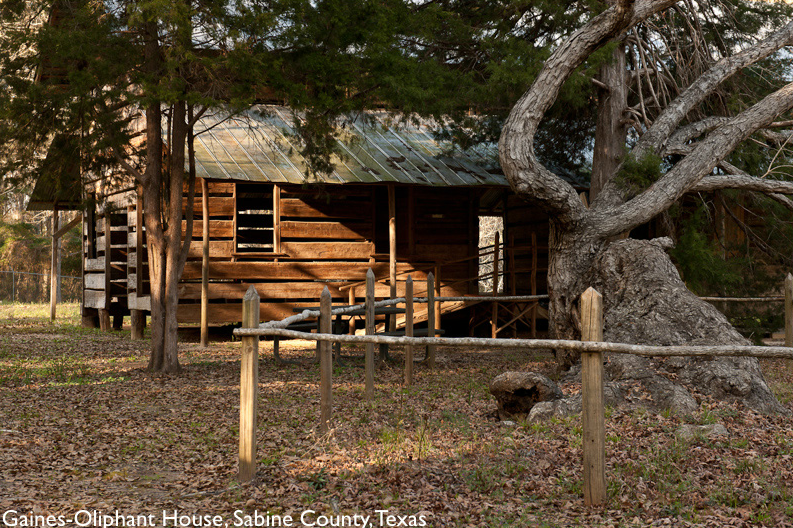
Nacogdoches
Durst-Taylor Museum
The Durst-Taylor Historic House and Gardens is a circa 1835 wood-frame house and is the second oldest building in Nacogdoches. The house sits very close to the intersection of the old El Camino Real de los Tejas and La Calle de Norte and was home to many early businessmen, bankers, and political leaders including Thomas J. Rusk, Bennet Blake and William Ochiltree. This hands-on museum includes a fully functioning smokehouse, blacksmith shop and chicken coop as well as heirloom gardens and a sugarcane mill.
Located: 304 North St, Nacogdoches, Texas, 75961
National Park Service
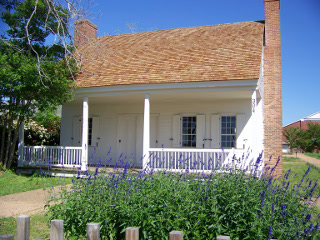
Nacogdoches Pocket Park
Located: 104 S Pecan St, Nacogdoches, TX, 75961, USA
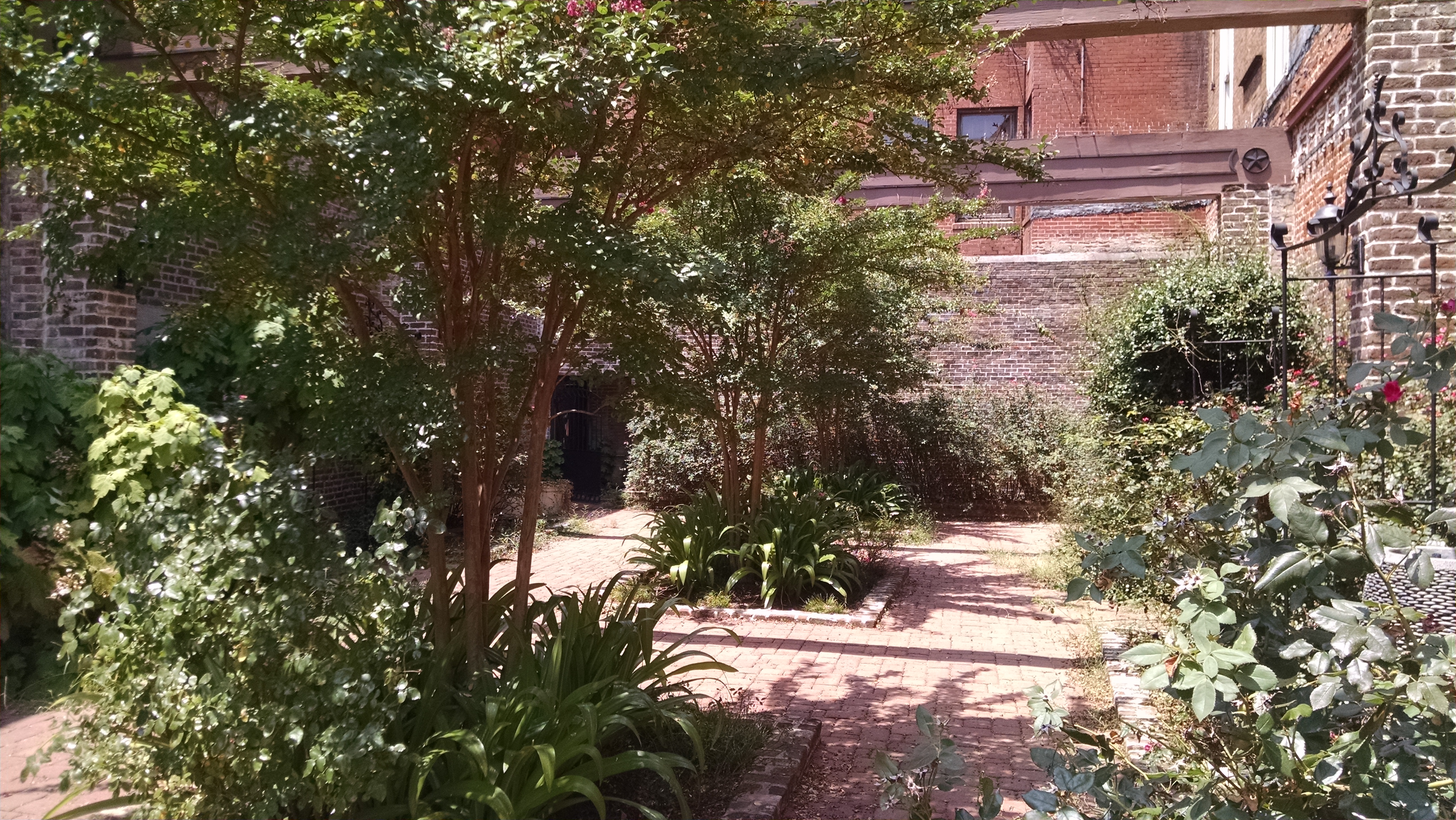
Sterne-Hoya House Museum
“The Sterne-Hoya House Museum and Library is an 1830 dogtrot house built by prominent merchant and Texas Revolution leader, Adolphus Sterne. It was occupied by the Sterne family until 1869 when it was sold to the von der Hoya family. The house remained in the von der Hoya family until it was donated to the City of Nacogdoches in 1958, to be used as a library. The interior of the Sterne-Hoya Museum depicts the history of the Sterne occupancy during the Texas Revolution as well as the Victorian Period of the Hoya family. The house is furnished with period antiques, family heirlooms, a Texas history library and also has one of the earliest wine cellars in Texas.”
Located at: 211 S Lanana St, Nacogdoches, TX 75961
City of Nacogdoches
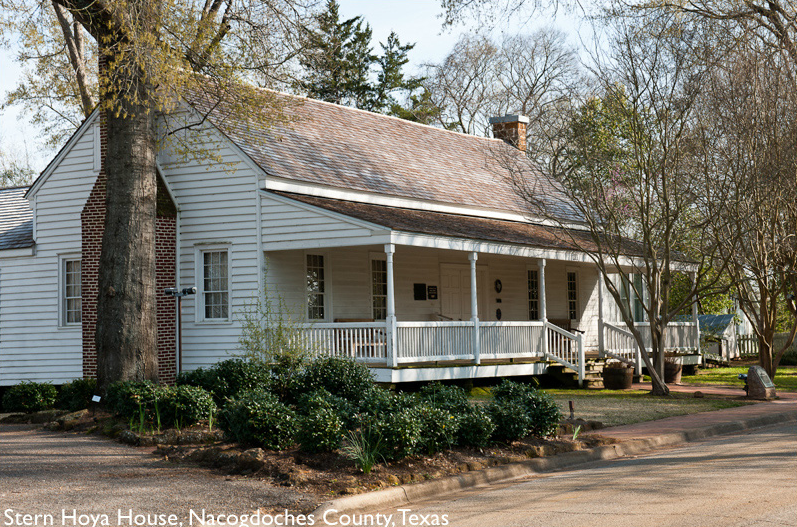
Stone Fort Museum
“The fort on the campus of SFA started its life as a magnificent Spanish Colonial house. Built by Antonio Gil Y’Barbo sometime between 1788 and 1791 on the Camino Real, the house weathered four revolutionary actions, acquiring its nickname the “Old Stone Fort” along the way. The Mexican government billeted soldiers in the house and a succession of filibusterers took temporary possession of the building before it settled into its final incarnation as a saloon. But the house Y’Barbo built could not withstand the march of progress. Demolished in 1902 against a backdrop of statewide protest, Y’Barbo’s house was the focal point of one of the first preservation efforts in Texas.”
Located at: 1808 Alumni Drive North, Griffith Boulevard, Nacogdoches, TX 75961
SFA University Website

Washington Square Moundsite
Located at: 516 N Mound St, Nacogdoches, Texas, 75961
SFA University Website
San Augustine
Mission Nuestra Señora de Dolores de los Ais
“Located today in San Augustine, Texas, Mission Nuestra Señora de Dolores de los Ais, often called Mission Dolores, was one of the easternmost missions of Spanish Texas and a stop on the El Camino Real de los Tejas. Founded in the 1720s to convert the Ais Indians, the mission was active for a little over fifty years before being discontinued and the site was soon covered by pine forest, its location lost to memory. The search for the site began in the 20th century, and archaeologists rediscovered the site in 1976. It has been excavated and extensively studied since then. In 2011 the site was listed on the National Register of Historic Places and is along the El Camino Real de los Tejas National Historic Trail, which extends across Texas into Louisiana.” (National Park Service)
Located at: 701 S Broadway St, San Augustine, TX 75972
Texas Historical Commission
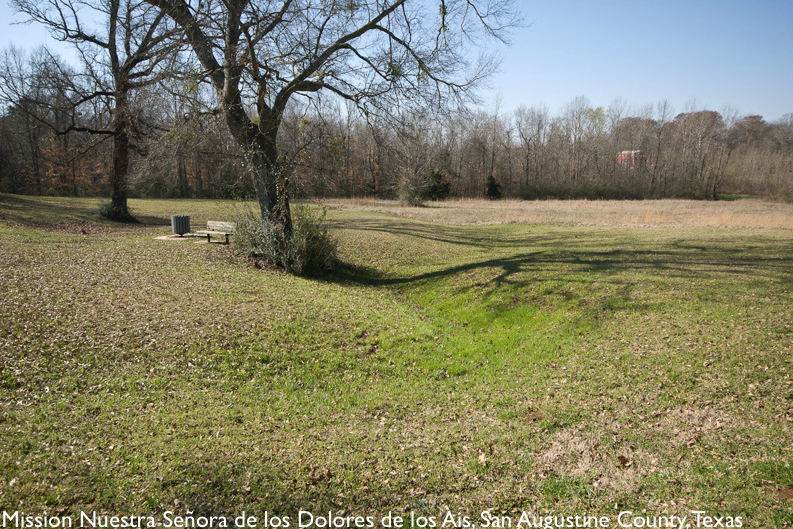
Lobanillo Swales
“Two sets of deep and parallel swales extend about one-quarter mile through the forest. One set of swales has seven parallel ruts reaching a depth of 18-feet and 12-feet wide. A state historic marker in nearby Geneva says that the historic Spanish rancho known as El Lobanillo was located nearby. The rancho included the pueblo of Gil Y’Barbo (1729-1809), a refuge used by his ailing mother and other refugees in 1773, when Spain evacuated colonists from western Louisiana and East Texas. It was given as a land grant to Juan Ignacio Pifermo in 1794, and inherited in the early 1800s by John Maximillian (ca. 1778-1866).”
Located: 31.477990, -93.949268
National Park Service
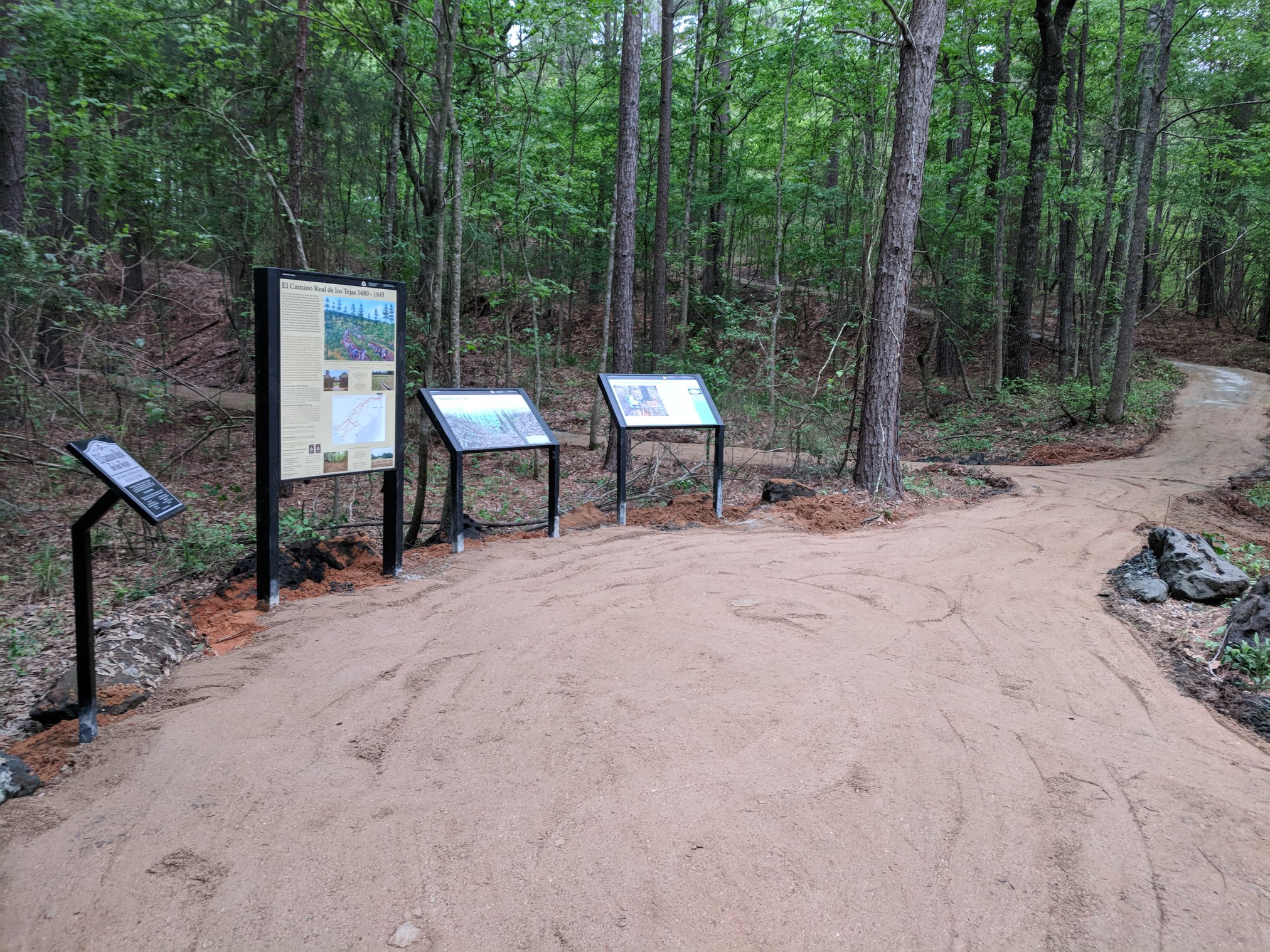
Louisiana
Many
Fort Jesup State Historic Site
“Fort Jesup is a reminder of a young nation’s growing pains and a relic of Louisiana’s rich international heritage. When the Louisiana Purchase Treaty of 1803 failed to clearly define the western boundary of Louisiana, which was also the western border of the country at that time, the United States claimed eastern Texas and Spain claimed western Louisiana. The ensuing dispute gave rise to the “Neutral Ground,” an area where the laws of neither nation were enforced. Soldiers and settlers were kept out and rogues of various stripes ruled the region.” (Louisiana Department of Culture)
Located at: 32 Geoghagan Rd, Many, LA 71449
Louisiana State Parks
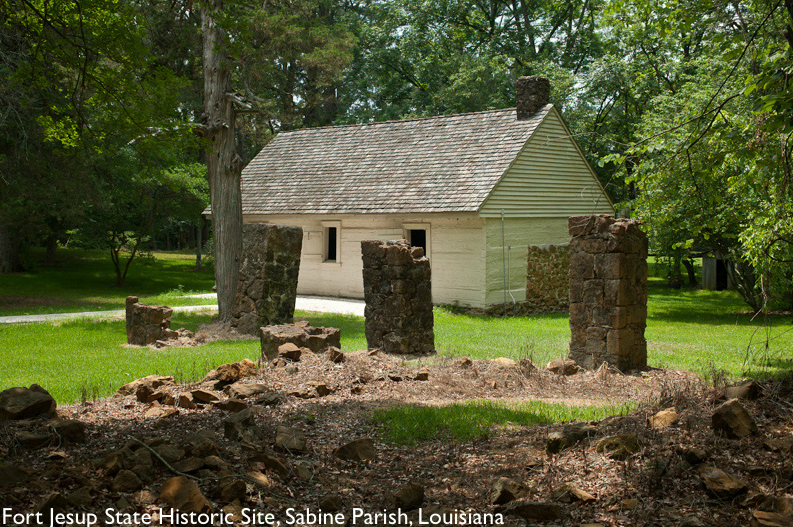
Robeline
Los Adaes State Historic Site
“Los Adaes, the symbol of New Spain in Louisiana, was once the capital of Texas and the scene of a unique cooperation among the French, the Spanish and the indigenous Native Americans. An area rich in archaeological finds, it thrives today as one of Louisiana’s most intriguing state Historic Sites.” (Louisiana Department of Culture)
Notable Sites within Park: Camino de la Laguna, Camino del Bano, Camino del Bayuco, Camino de Natchitois, Mission San Miguel, Presidio de Nuestra Senora, Camino de los Ais.
Located at: 6354 LA-485, Robeline, Louisiana, 71469
Cane River National Heritage Area
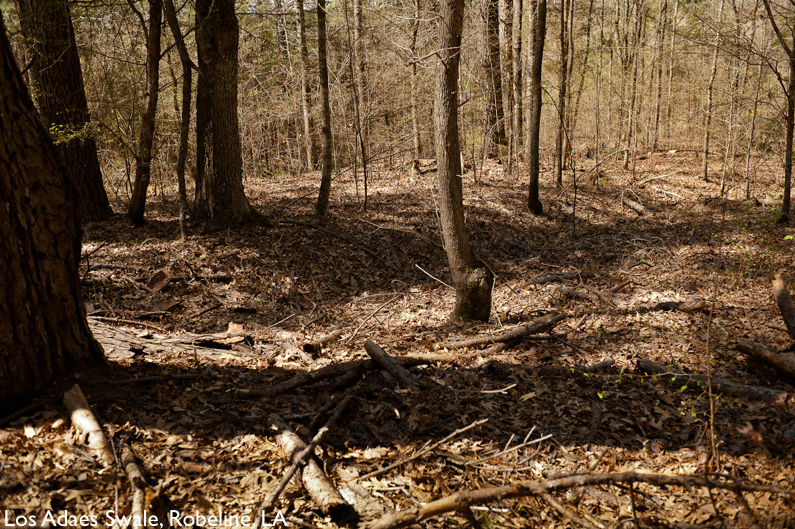
Adai Indian Nation Cultural Center
Experience a day in the life of the Adai Indian by visiting historic dwellings, exploring the Cultural Center, viewing historic artifacts, and watching the buffalo roam. Arts and crafts shop and snack shop available.
Located:4460 LA-485, Robeline, Louisiana, 71469
Natchitoches
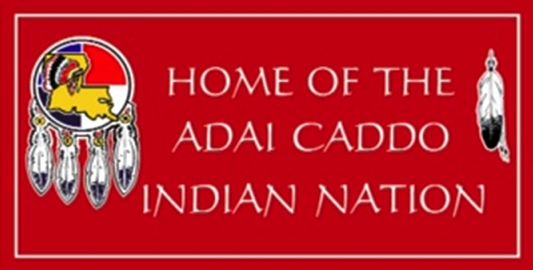
Natchitoches
American Cemetery
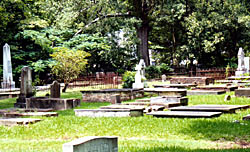
Caddo Memorial Plaza
This is the site where more than 100 American Indian graves were unearthed in the 1930s, at the start of construction of the hatchery by the U.S. Fish and Wildlife Service. At that time, the Native American Graves Protection and Repatriation Act was not in effect, and many human remains, as well as funerary items, were crushed, stolen, looted, or destroyed. Some remains were transported to the Smithsonian Institution in Washington, DC, where they were kept in “The Nation’s Attic” at the National Museum of Natural History until 2007. In 2000, authorized by the Museum of the American Indian Act, and supported by the Caddo Nation’s Tribal Council and Repatriation Committee, the Caddo Nation Cultural Preservation Department began a long journey to return these remains to their ancestral home on Caddo Nation lands. (National Park Service)
Located: 615 South Dr, Natchitoches, Louisiana, 71457
Fort Saint Jean Baptiste State Historic Site
“French-Canadian trader Louis Juchereau de St. Denis was on a mission to establish trading ties with Mexico. After traveling nearly 140 leagues up the Red River, he encountered an impenetrable logjam. At this spot, he hastily built two crude huts, which became Fort St. Jean Baptiste and the town of Natchitoches, the oldest permanent settlement in the Louisiana Purchase territory. St. Denis became the commander of the fort in 1722, and the colony thrived until his death in 1744.
In 1731 an attack by the Natchez Indians exposed the vulnerabilities of the small French fort, prompting French officials to send engineer François Broutin to oversee the construction of a larger and stronger fortification. Spanish officials charged it was an invasion of Spanish territory, but St. Denis politely ignored their protests.
The fort continued to be garrisoned by French marines until 1762, when France’s defeat in the French and Indian War forced it to cede Louisiana to Spain. Spanish authorities continued to operate the fort as a military outpost and trading center; however, the fort no longer protected a territorial boundary, so its strategic importance was diminished. Spain eventually abandoned the fort, and by the time the United States acquired the territory in 1803, it was in ruins.
Gaze upon this full-scale replica fort. Located in the west bank of the Cane River, it lies a few hundred yards from the site of the original 1732 fort.” (National Park Service)
Located at: 155 Jefferson St, Natchitoches, LA 71457
Louisiana State Parks
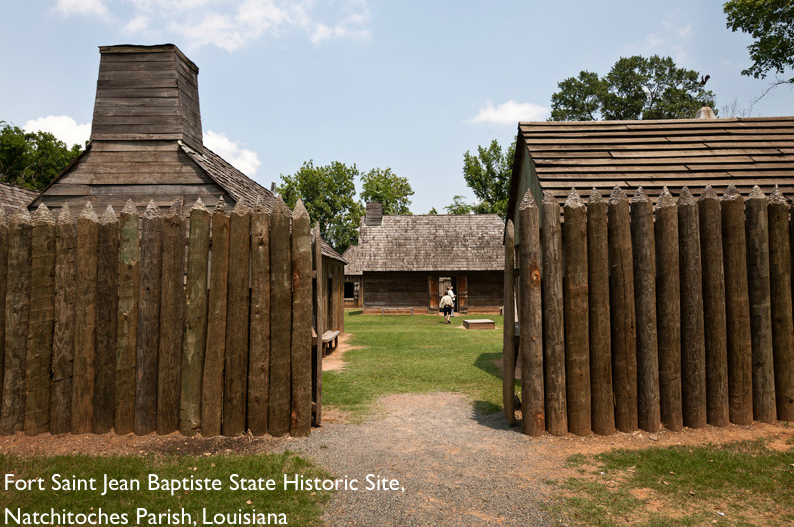
Prudhomme-Rouquier House
The Prudhomme-Rouquier House is one of the most architecturally significant buildings in the Natchitoches Historic District. Constructed between 1790 and 1811, this home predates most other surviving buildings in downtown Natchitoches. Although the exterior was remodeled in 1825 to resemble the Federal or Greek Revival style, it was originally a French Creole building. The builders of the home used the traditional French Creole method of erecting cypress beams and filling in the spaces with bousillage (a mixture of mud, Spanish moss, and deer hair). However, the Prudhomme-Rouquier house is unique in that it is a two-story home completely done in this method of construction. Other two-story Creole homes usually began as one-story homes, elevated on brick piers or walls. Often the area under the main floor would be bricked in to add additional living space, giving the impression of a second floor. The Prudhomme-Rouquier house is the only known example of a true two-story bousillage building in the nation.
Located at: 446 Jefferson St, Natchitoches, Louisiana, 71457
National Park Service
